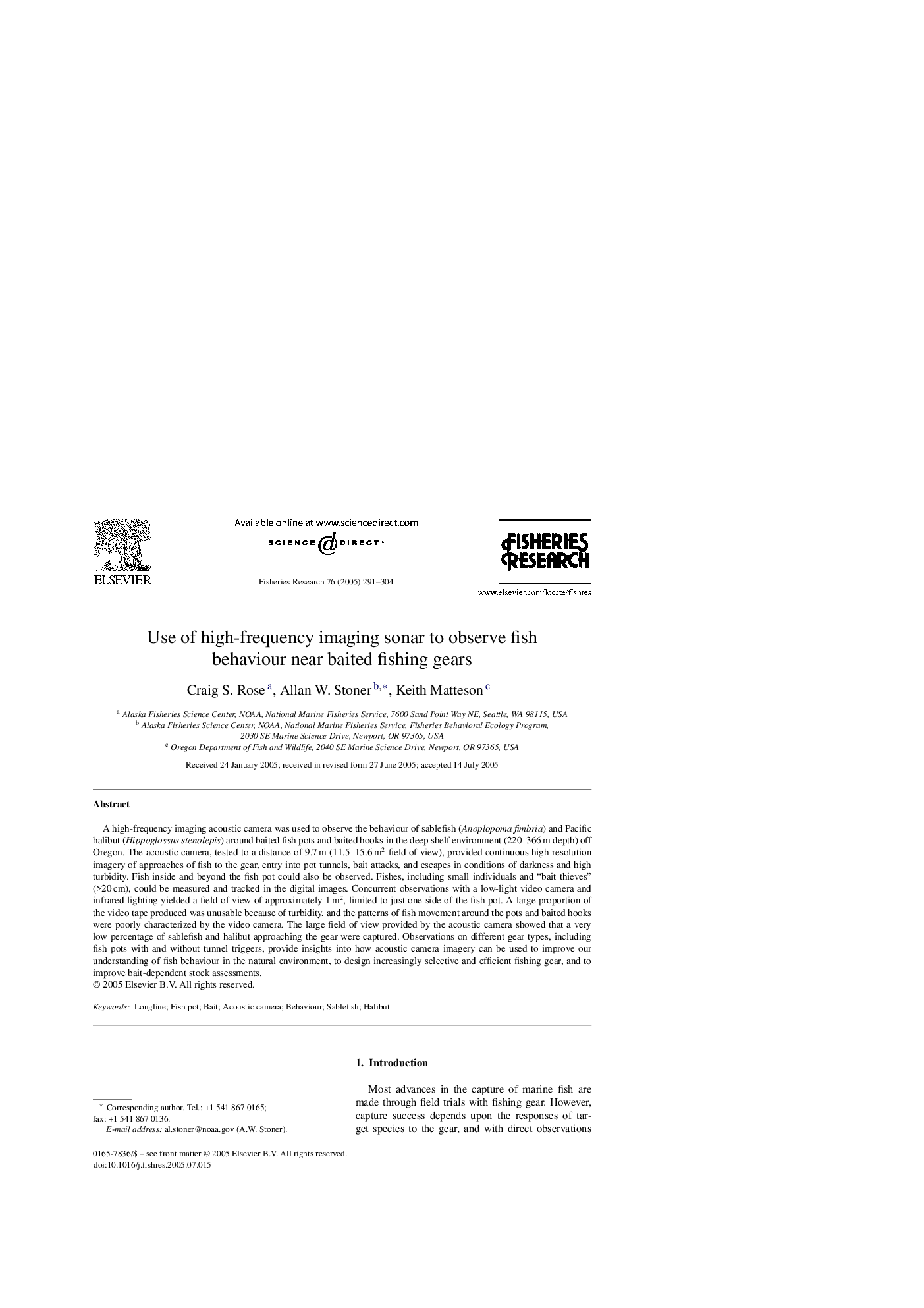| Article ID | Journal | Published Year | Pages | File Type |
|---|---|---|---|---|
| 9481623 | Fisheries Research | 2005 | 14 Pages |
Abstract
A high-frequency imaging acoustic camera was used to observe the behaviour of sablefish (Anoplopoma fimbria) and Pacific halibut (Hippoglossus stenolepis) around baited fish pots and baited hooks in the deep shelf environment (220-366Â m depth) off Oregon. The acoustic camera, tested to a distance of 9.7Â m (11.5-15.6Â m2 field of view), provided continuous high-resolution imagery of approaches of fish to the gear, entry into pot tunnels, bait attacks, and escapes in conditions of darkness and high turbidity. Fish inside and beyond the fish pot could also be observed. Fishes, including small individuals and “bait thieves” (>20Â cm), could be measured and tracked in the digital images. Concurrent observations with a low-light video camera and infrared lighting yielded a field of view of approximately 1Â m2, limited to just one side of the fish pot. A large proportion of the video tape produced was unusable because of turbidity, and the patterns of fish movement around the pots and baited hooks were poorly characterized by the video camera. The large field of view provided by the acoustic camera showed that a very low percentage of sablefish and halibut approaching the gear were captured. Observations on different gear types, including fish pots with and without tunnel triggers, provide insights into how acoustic camera imagery can be used to improve our understanding of fish behaviour in the natural environment, to design increasingly selective and efficient fishing gear, and to improve bait-dependent stock assessments.
Related Topics
Life Sciences
Agricultural and Biological Sciences
Aquatic Science
Authors
Craig S. Rose, Allan W. Stoner, Keith Matteson,
